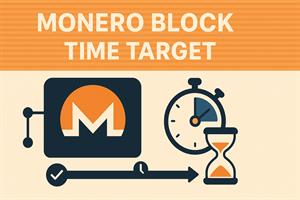TL;DR: Mobile mining works, but it’s not profitable and can stress your phone (heat, battery wear, throttling). Treat it as a learning/experiment, not an income stream. If you still want to try it, the guide below shows how to run XMRig for Android safely with realistic expectations.

How Monero Mining Behaves on Phones
- Algorithm: Monero uses RandomX, optimized for general-purpose CPUs. Phones can mine, but thermals and power limits keep hashrates low.
- Typical mobile hashrates: very rough ranges:
- Entry/mid devices: ~5–25 H/s
- Recent high-end devices/tablets: ~25–70 H/s
- Payout reality: At those rates, revenue is usually fractions of a cent per day. Electricity and device wear can cost more than you earn.
Featured Tool: XMRig for Android
XMRig for Android is a community project that compiles the popular XMRig miner for Android (ARM/x86).
- Homepage: github.com/XMRig-for-Android/xmrig-for-android
- Listing on Monerica: XMRig for Android (directory entry)
Step-by-Step: Install & Configure (Android)
1) Prepare
- Have a Monero wallet address ready (e.g., Cake Wallet or Monero GUI).
- Pick a mining pool (PPLNS/PPS). Check your preferred pool’s Android/Stratum endpoint and port.
- Plan for cooling & power: mine while plugged in, phone on a stand with airflow.
2) Get the App
- Download the latest release from the project’s GitHub Releases page.
- If sideloading, enable Install unknown apps for your browser/Files app (Android setting).
- Note: Some app stores restrict mining apps; GitHub sideload is common.
3) Configure Pool & Wallet
- Pool URL (example):
stratum+tcp://pool.example.com:PORT - Wallet address:
44Affq5kSiGBoZ... (your XMR address) - Worker name (optional):
android01 - Threads: start with 25–50% of CPU cores, then adjust for temps.
- CPU priority: low; enable “stop when on battery” if available.
Example XMRig config fragment (for reference)
{
"autosave": true,
"cpu": { "enabled": true, "priority": 1, "max-threads-hint": 50 },
"pools": [
{
"algo": "rx/0",
"url": "pool.example.com:PORT",
"user": "YOUR_XMR_ADDRESS",
"pass": "android01",
"tls": false
}
]
}
4) Start Mining & Monitor
- Start the miner and watch for accepted shares in the console.
- Track device temperature and throttling. If it gets hot, reduce threads.
- Check the pool dashboard using your wallet address to confirm shares.
Safety & Device-Health Tips
- Heat is the limiter: sustained high temps will throttle and can shorten component life.
- Power wisely: mine while plugged in; avoid deep cycling the battery.
- Limit threads: start low; increase cautiously. Consider time limits (e.g., mine for 30–60 min sessions).
- Background limits: disable battery optimizations for the miner if it stops when screen is off.
- Don’t mine on a daily-driver you can’t afford to replace.
Expectations: Hashrate & Earnings
- Phones are slow miners: 5–70 H/s is typical. Earnings are usually negligible.
- Pools smooth payouts: Solo mining on a phone is impractical; always use a pool.
- Electricity & wear: Even “cheap” power can be outweighed by device wear/heat over time.
Better Alternatives (If Your Goal is Impact)
- Run a node: A pruned Monero node improves privacy and network resilience.
- CPU mine on desktop: A cooled desktop CPU yields many times a phone’s hashrate.
- Contribute tools/content: Help docs, translations, or audits for open-source projects.
Common Issues & Fixes
- App stops when screen locks: Disable battery optimization for the app.
- Phone gets too hot: Cut threads in half; mine only while cooled and plugged in.
- No shares accepted: Check pool URL/port, firewall/VPN, and wallet address typos.
- Very low hashrate: Other apps may be throttling CPU; close background apps and reduce thermals.

